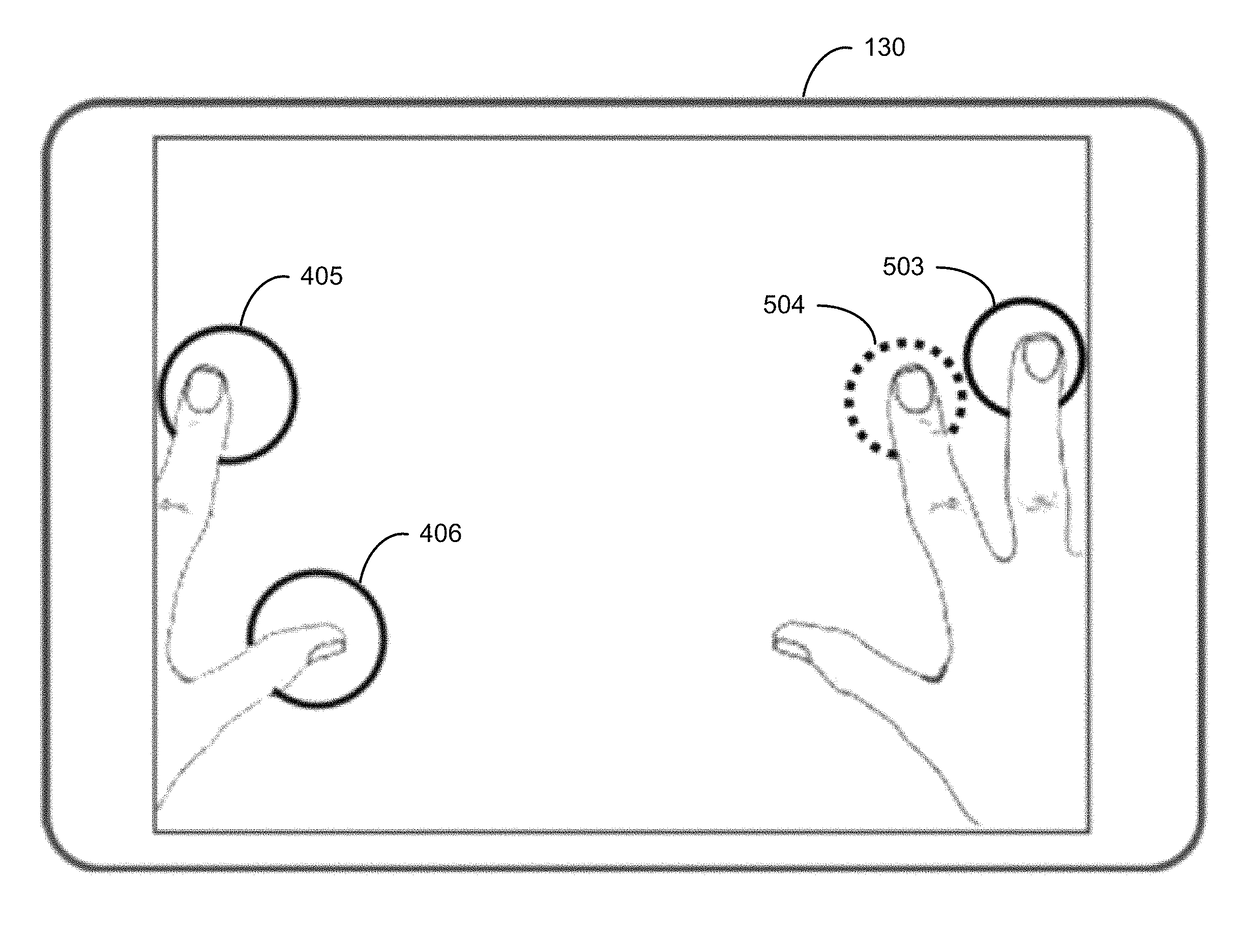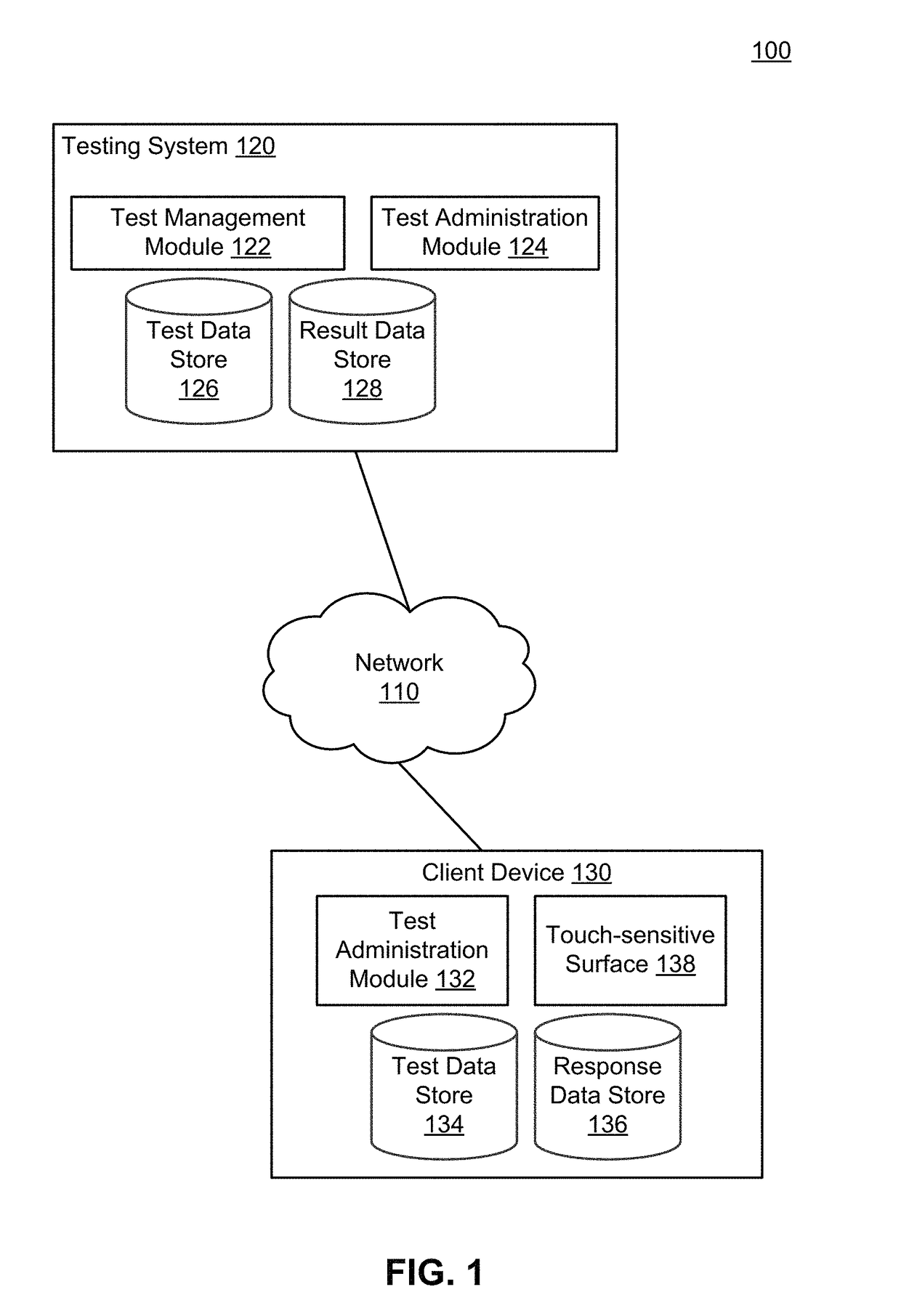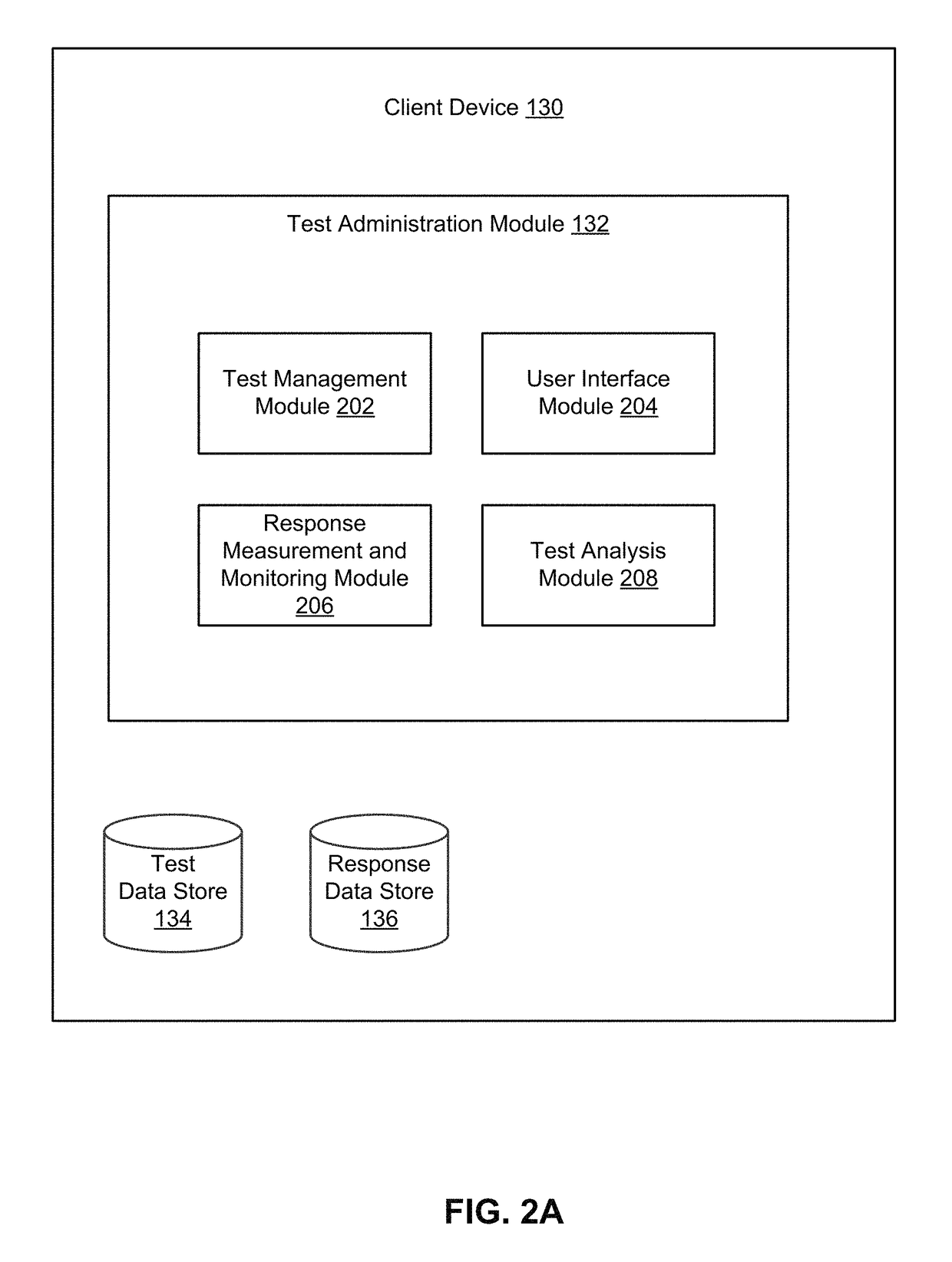Motion restriction and measurement for self-administered cognitive tests
a self-administered, cognitive test technology, applied in the field of cognitive testing systems and methods, can solve the problems of invalid or incorrect results, insufficient number of skilled clinicians available to provide such tests, and significant cost of such tests
- Summary
- Abstract
- Description
- Claims
- Application Information
AI Technical Summary
Benefits of technology
Problems solved by technology
Method used
Image
Examples
example use cases
[0080]The following are examples of tests in which the use of motion restriction regions ensures that the motor skills or cognitive abilities being tested are accurately and reliably measured by preventing compensatory strategies or inputs.
[0081]Biometric or Psychometric Learning Test: In this type of test, the client device displays a list of stimuli (words, numbers, images) on the display device, or the stimuli are presented audibily (e.g., the words output from recorded or synthesized speech); the user is required to respond by orally repeating as many of the stimuli as they can after they are presented. During the test the user is instructed to anchor one or more fingers of both hands to the touchscreen of the client device. Anchoring fingers of both hands prevents the user from using his or her hands to capture data during the learning test, for example by writing down notes with the list of stimuli. During the test, if the anchored fingers are dislodged or moved outside the co...
PUM
 Login to View More
Login to View More Abstract
Description
Claims
Application Information
 Login to View More
Login to View More - R&D
- Intellectual Property
- Life Sciences
- Materials
- Tech Scout
- Unparalleled Data Quality
- Higher Quality Content
- 60% Fewer Hallucinations
Browse by: Latest US Patents, China's latest patents, Technical Efficacy Thesaurus, Application Domain, Technology Topic, Popular Technical Reports.
© 2025 PatSnap. All rights reserved.Legal|Privacy policy|Modern Slavery Act Transparency Statement|Sitemap|About US| Contact US: help@patsnap.com



